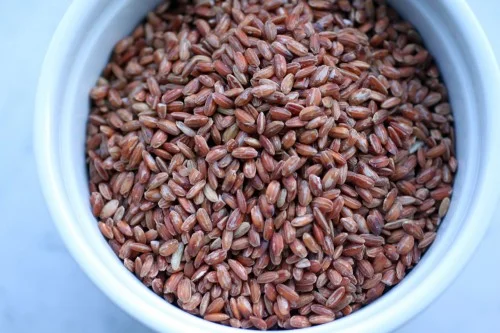Himalayan Red Rice
Recently, on Facebook, I was asked about colors of salt and rice. What are the differences between pink, red and black salt and what about black or red rice? Great questions because it can all get pretty confusing. I will definitely talk about salts at another time (though I have a bit on black salt here), but I thought I would highlight Himalayan red rice, which is a tasty and healthy alternative to white rice that is truly worth exploring.
First, can I just say how beautiful this rice looks! It has a rosy hue that is stunning up against bright green veggies and even combined with white rice for a bespeckled dish. Himalayan red rice is, as its name suggests, grown in and around the Himalayas and is often referred to as Bhutanese red rice (although France and other parts of Asia do grow a variety in smaller quantities). It’s a short grain, heirloom rice that is grown at an altitude and thought to be fed by glacier water – making it particularly mineral-rich.
Himalayan red rice is semi-milled, and the residual red bran makes it compelling in terms of fiber content (way higher than white). It has trace minerals, vitamins, and antioxidants and is often compared to brown rice, but has, what I think, is a far better flavor. It’s nutty, a bit toothsome, sweet even, and has a gorgeous perfume to it…
With a higher level of bran, it takes a bit longer to cook than white rice, but the wait is worth it. It’s the perfect salad rice – great with a vinegar base for a summer picnic with fresh tomatoes and corn. The nuttiness holds up well to spices and blends seamlessly with mushrooms. It also cooks up like risotto (a personal obsession of mine), so I’ve been meaning to do a mushroom red rice risotto soon.
It’s definitely available at Whole Foods and health food stores carry it. Have you tried it? How do you cook with Himalayan red rice?


